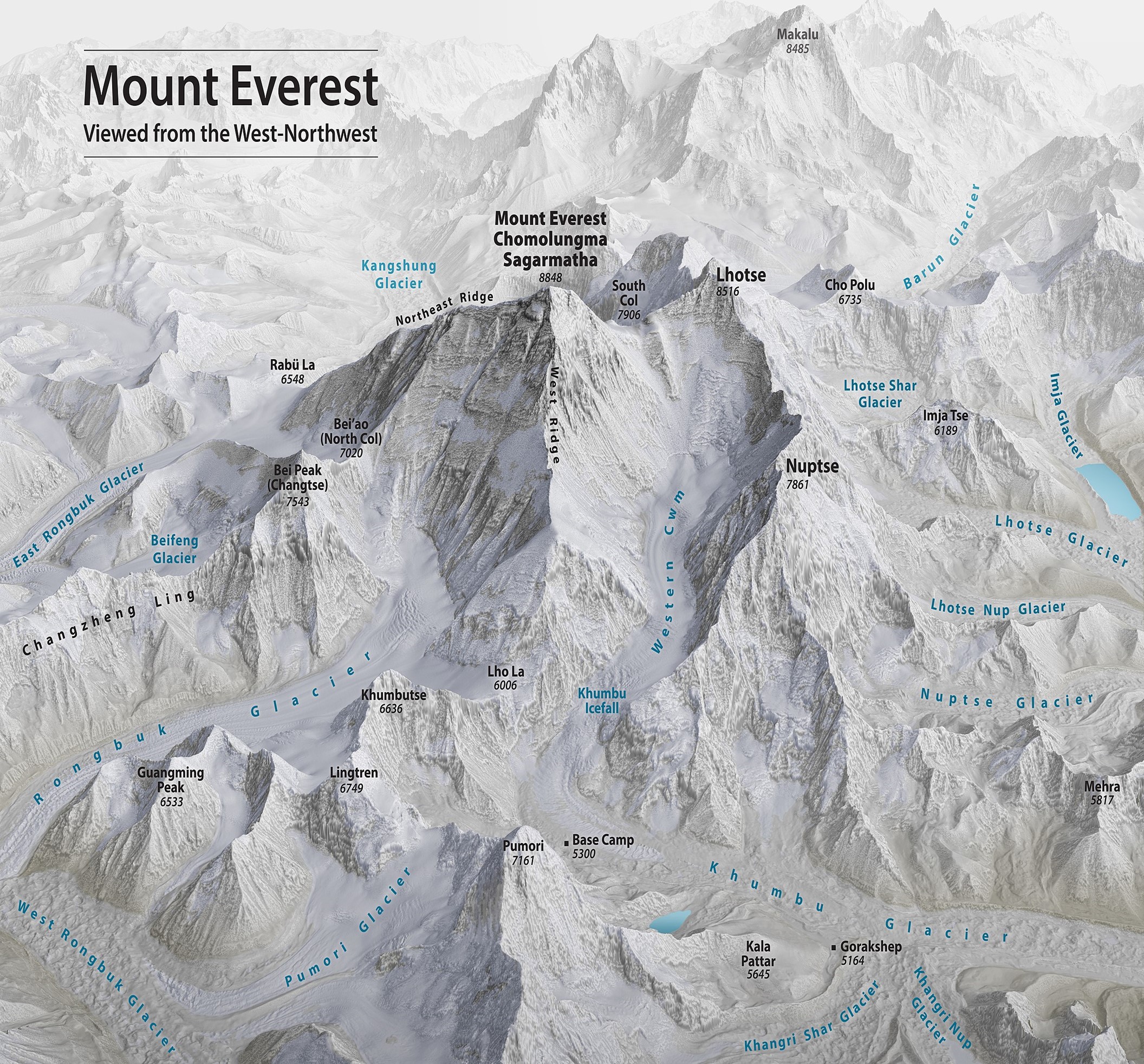
Credit: Tom Patterson, CC0, via Wikimedia Commons
The largest mountain in our solar system is not on Earth but on Mars. Olympus Mons is 72,000 feet tall—that’s two and a half times higher than Everest!
And mountains on Earth will never get that tall. Why?
First, we have stronger gravity. About two and a half times that of Mars.
Our mountains form when tectonic plates push together. One plate slides over the other, or the plates crush together in the middle. Both lift material upward.
And they form when volcanoes carry magma from within the Earth, up and out.
And as soon as they form, gravity starts pulling them back down into Earth’s crust. As they sink, their bases can melt, spreading them wider rather than tall.
Another height-limiting factor is erosion by Earth’s plentiful water.
Rain runs down a mountain, which erodes it grain by grain.
Snow freezes into glaciers, which can carve through mountain ranges, pushing rock debris downhill in front of them.
Or, water seeps into cracks and freezes, then breaks off rock in chips or entire slabs—and gravity takes over from there.
Combined, plate tectonics, gravity and water put a limit on Earth’s mountains. The top ten average around 28,000 feet tall.
However, these forces also make Earth’s mountains rise and fall faster than on other planets in the solar system. They may not be as tall, but in my view, their complex stories make them even more interesting.
Background
Synopsis: How tall can Earth’s mountains get? The tallest mountain on Mars is twice as tall as the tallest mountain on Earth. What limits the height of mountains on our planet?
- We talked about which of Earth’s mountains is the tallest in ED-050 World’s Tallest Mountain. It depends on how you measure them.
- Earth’s ten tallest mountains cluster in the range of 26,250 to 28,250 ft (8,000–8,611 m) above sea level, with only one mountain that pushes higher: Mount Everest, at 29,032 ft (8,849 m) above sea level (ED-210 Topping Off Everest).
- Since Earth is 69,000 ft (or 13 mi [21 km]) wider at its equator than its poles, the mountaintop that is farthest from Earth’s center is Ecuador’s Chimborazo, with a summit of 20,703 ft (6,310 m) above sea level just one degree south of the equator.
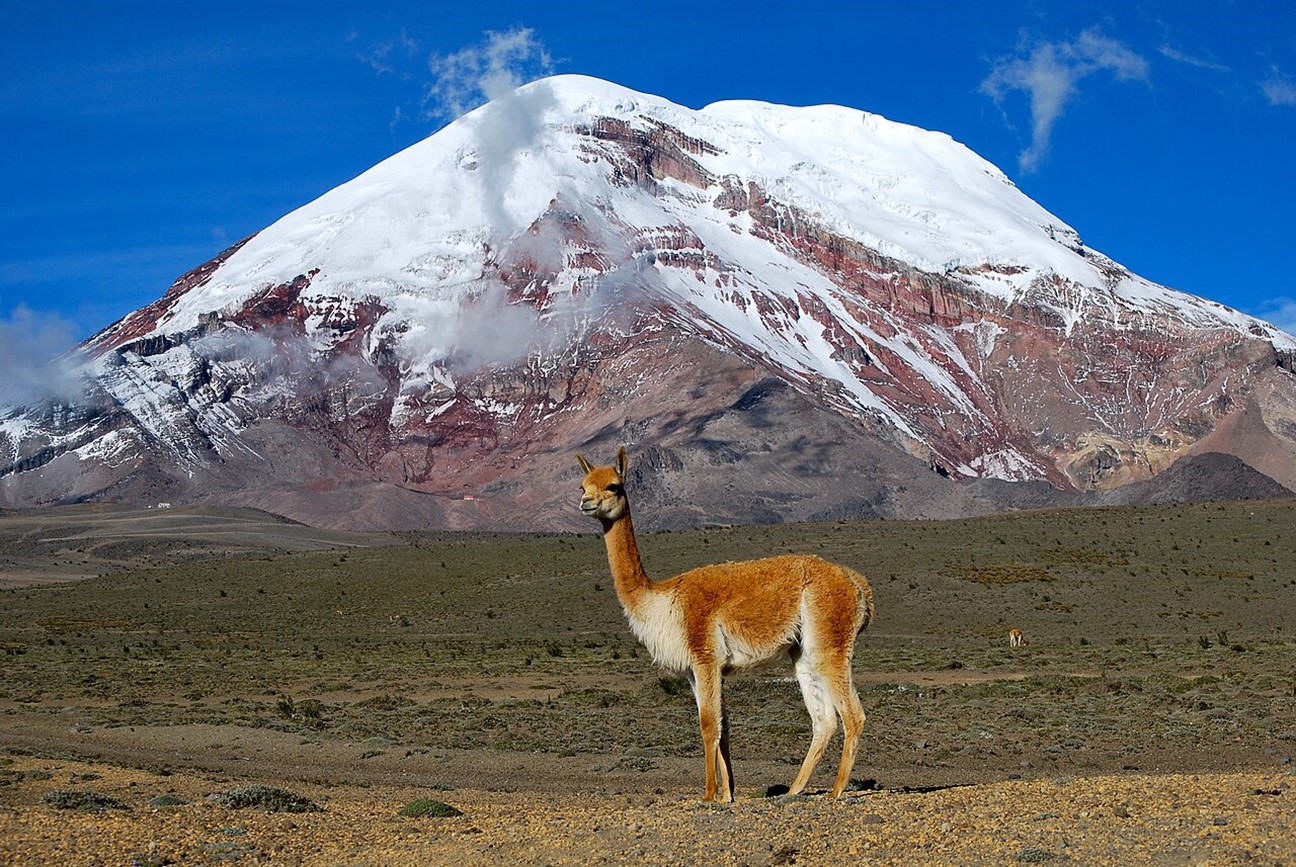
The summit of Ecuador’s Chimborazo is the point on the Earth's surface that is farthest from the Earth's center. In the foreground is a vicuña, one of two wild South American camelids.
Credit: Dabit100 / David Torres Costales Riobamba, via Wikimedia Commons - The mountain that extends farthest from its base is Hawaiʻi’s Mauna Kea: from the base to tip, the mountain is 33,480 ft (10,205 m) tall, with 59% of its height underwater.
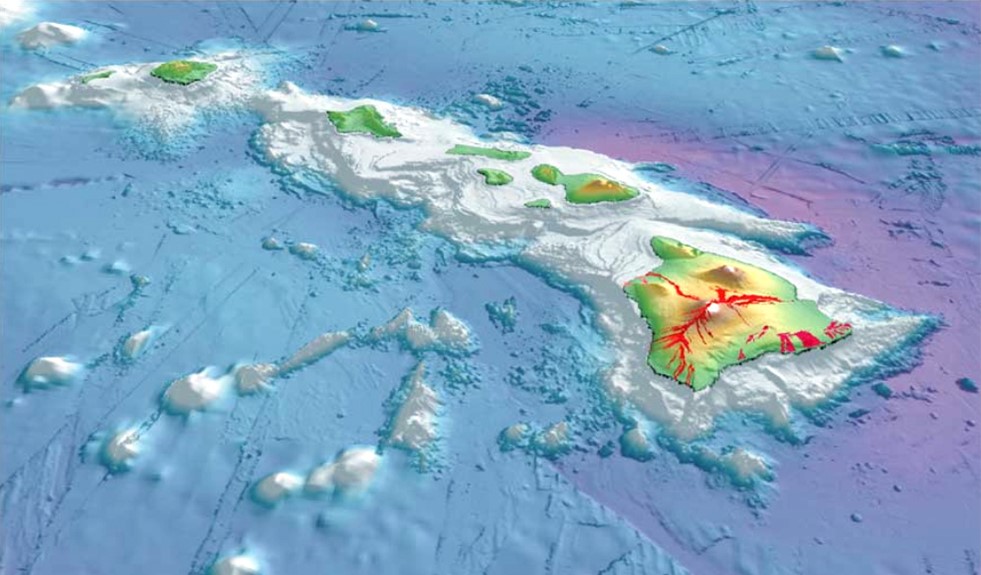
Mauna Kea is the highest peak on the island of Hawaiʻi and the tallest in the world (33,480 ft [10,205 m]) if measured from the ocean floor surrounding its base to its summit.
Credit: Eakins, B., et al., U.S. Geologic Survey, Geologic Investigations Series Map I-2809
- But the tallest mountain discovered on other planets in our solar system occurs on Mars.
- Measured at more than 72,000 ft (21.9 km) by the Mars Orbiter Laser Altimeter (MOLA), Olympus Mons is more than twice the total height of Mauna Kea, and 2.5 times the height of Mount Everest above sea level.
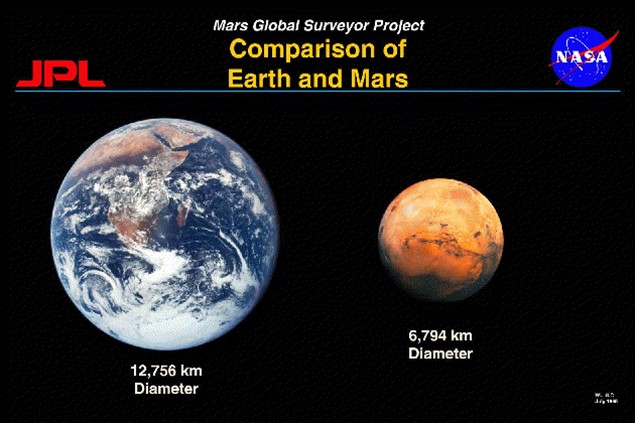
Mars is a little more than half the size of Earth, but its tallest mountain is twice the size of Earth’s. Why aren’t Earth’s mountains bigger?
Credit: NASA - So … why don’t mountains grow that large on Earth?
- Measured at more than 72,000 ft (21.9 km) by the Mars Orbiter Laser Altimeter (MOLA), Olympus Mons is more than twice the total height of Mauna Kea, and 2.5 times the height of Mount Everest above sea level.
- Natural rules, like gravity and material strength, limit the height of mountains on Earth. Then, persistent erosive forces modify the result.
- Earth’s gravity constantly pulls materials toward Earth’s core.
- Earth’s crust is made up of relatively thin plates that account for less than 0.6% of Earth’s radius. Oceanic and continental plate thicknesses range from 4.4 to 25 mi (7–40 km) compared to Earth’s 3,959 mi (6,371 km) average radius.
- These brittle plates float on the hot semisolid mantle, which acts as a viscous fluid over geological time frames.
- As plates collide, crumpling the crust, they build most of their height during the first 15 to 20 million years of the collision, before their mass subsides downward into the softer mantle.
- There, they are heated and softened, collapsing further and spreading outward instead of upward because of their flexible bases.
- This isostatic equilibrium effect depends on the mass of the mountain and the material strength of the crust below it.
- The broad uplift of the Himalayan Plateau is supported by thick, doubled-up continental crust.
- The tremendous weight of Mauna Kea on thin oceanic crust has caused the weaker ocean floor around Hawaiʻi to subside dramatically.
- Rock type, precipitation, erosion, and the height of the supporting plateau also modify active tectonism to influence the elevations of individual mountains.
- Earth’s abundant water supercharges erosion in both liquid and solid form—glaciers typically carve deep cirques within 2,000 ft (610 m) of Earth’s mountaintops, rapidly lowering their elevations as gravity drives large landslides.
- At the same time, water constantly moves sediment toward the sea, flattening and smoothing the landscape.
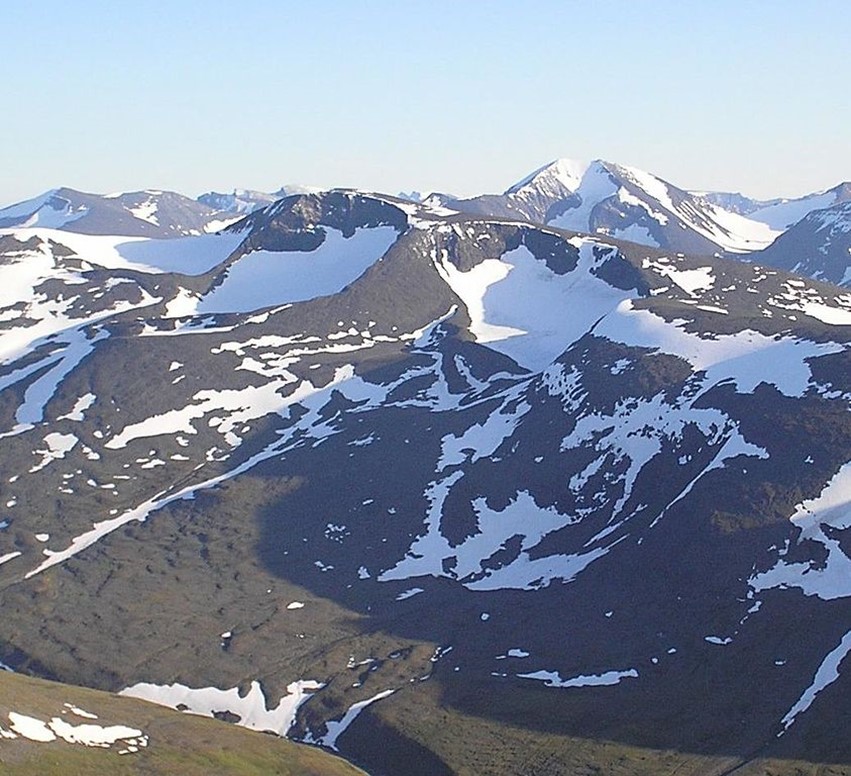
Cirques caused by glacial erosion in Abisko National Park, Sweden.
Credit: Dentren at English Wikipedia, via Wikimedia Commons
- Mountains form by different processes on Earth. Some form through the forces of plate tectonics, others are created by volcanism, and some are created by both.
- The Himalayas and Everest formed when the thick Indian subcontinent crashed into the thick Eurasian plate. The resulting compressive forces caused the mountains to crunch upward, creating Earth’s thickest continental crust at nearly 50 mi (80 km) below the Tibetan Plateau.
- The Andes and Chimborazo formed when thinner oceanic crust subducted below the thick South American plate, causing volcanism above the downgoing slab.
- Mauna Kea formed as the Pacific plate traversed a mantle hotspot, producing shield-type volcanism.
- The huge extinct Martian volcano Olympus Mons—Greek for Mount Olympus, home of the gods—had slightly different natural rules to follow. It is most similar to Mauna Kea.
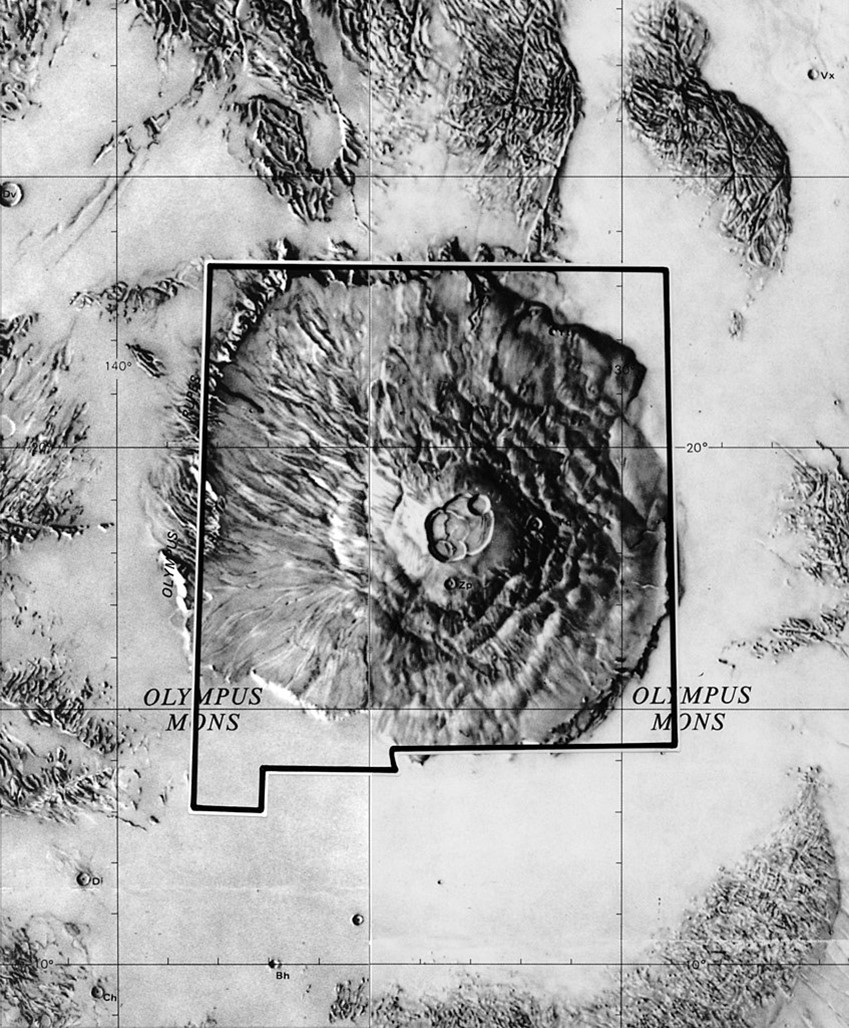
With a caldera 50 mi (80 km) across, the diameter of Olympus Mons is 370 miles (600 kilometers), about the size of New Mexico! And its summit pokes all the way through the Martian atmosphere.
Credit: Lunar and Planetary Institute, Houston, Texas, USA, via Wikimedia Commons- Like Mauna Kea, Olympus Mons is a shield volcano. It last erupted about 25 million years ago, but based on meteorite studies, its history may extend back 2.4 billion years.
- The Hawaiian Islands and Emperor Seamounts have progressively moved over a stationary hotspot in Earth’s mantle, creating a trail of volcanoes for more than 70 million years.
- With limited or no tectonism on Mars, Olympus Mons remained relatively stationary over its hotspot for hundreds of millions of years.
- A recent magnitude 4.7 marsquake measured by NASA’s InSight lander lasted six hours and demonstrated that the crust of the Red Planet is about 70% thicker than that of Earth.
- The crust of Mars ranges from 26 to 35 mi (42–56 km) thick, around 1.5% of the radius of the planet, providing a stronger substrate to support the weight of a huge feature like Olympus Mons.
- Gravity on Mars is only 38% of gravity on Earth.
- It is possible that the forces necessary to pump magma all the way to the summit of Olympus Mons are too much to sustain, even against its lesser gravity, so it may have reached its limit around 25 million years ago, becoming extinct.
- The gravity-driven forces that tear down mountains are less powerful, making landslides less prevalent.
- Flowing water is not currently present on Mars, and its atmosphere is thinner, so erosion is dramatically diminished.
- Like Mauna Kea, Olympus Mons is a shield volcano. It last erupted about 25 million years ago, but based on meteorite studies, its history may extend back 2.4 billion years.
- Other large mountains that dwarf our Mount Everest exist throughout our solar system.

